A white bedroom is the epitome of elegance and tranquility, offering a serene retreat from the hustle and bustle of daily life. Its crisp, clean aesthetic serves as a versatile foundation for various design styles, allowing you to create a space that feels both calming and sophisticated. In this article, we’ll delve into the essentials of designing a white bedroom retreat, exploring how to select the perfect shades, textures, and accessories to craft a harmonious and inviting environment. Whether you prefer a modern minimalist look or a more classic, cozy feel, discover how the essence of white can elevate your bedroom to a new level of refinement.
The Essence of Serenity in White Bedroom Designs
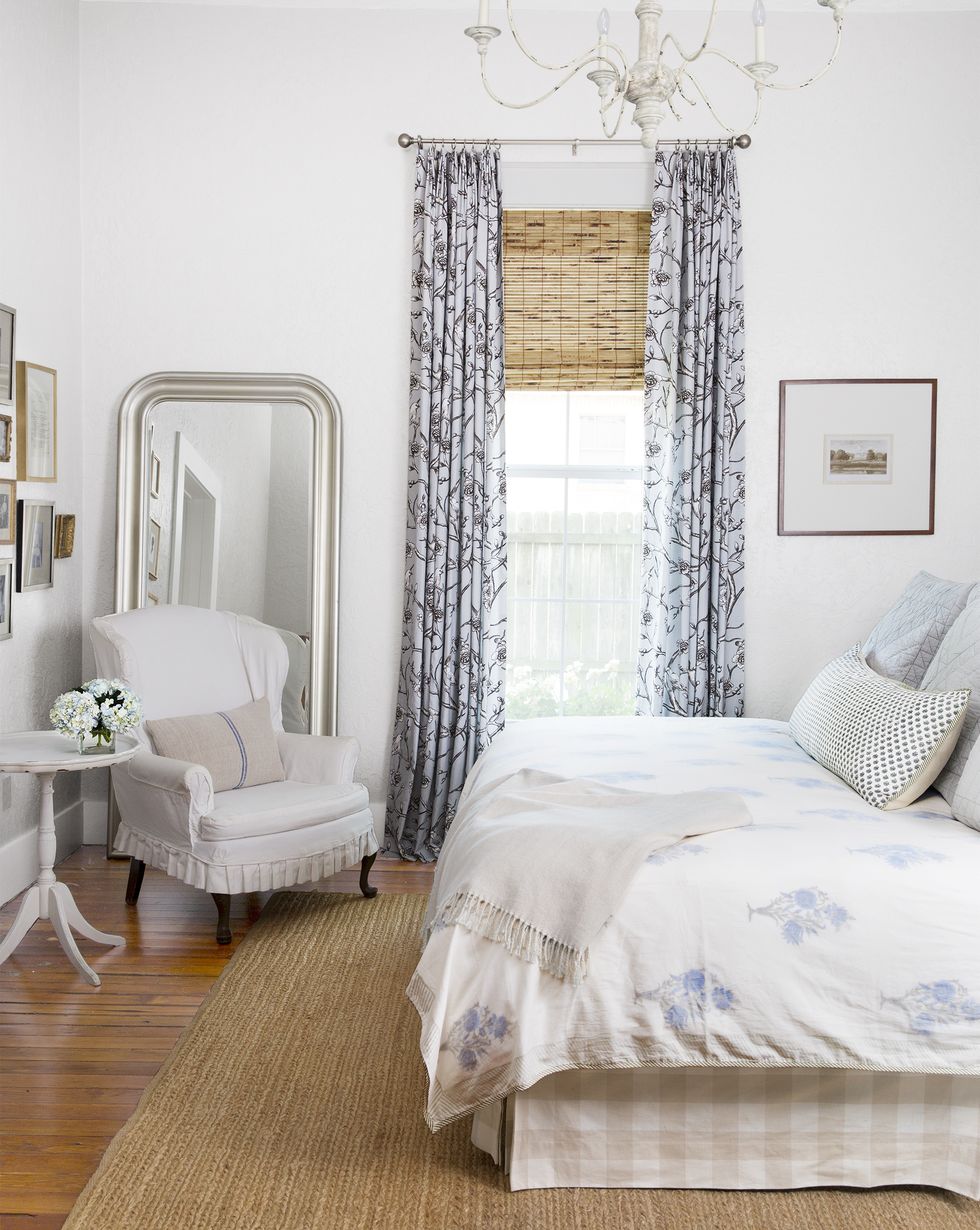
Creating a white bedroom is like curating a personal sanctuary, where each element plays a significant role in promoting tranquility. The use of varying shades of white can evoke a sense of depth and interest, transforming a simple space into a serene retreat. Consider incorporating different textures such as plush textiles, smooth ceramics, and airy linens to create a visually rich experience without overwhelming the senses. Elements to explore include:
- Layered Bedding: Combine different textures to create warmth.
- Soft Lighting: Utilize soft, diffused lighting to enhance relaxation.
- Natural Elements: Introduce greenery or wooden accents to balance the monochrome palette.
- Minimalist Decor: Choose a few carefully selected pieces to maintain an uncluttered space.
A well-thought-out design can seamlessly blend functionality with coziness, ensuring that every corner feels inviting. The strategic placement of furniture can open up the space, making it feel expansive and airy. Consider this simple guide to furniture arrangements:
| Furniture Item | Positioning Tips |
|---|---|
| Bed | Centered against the wall for focus |
| Nightstands | One on each side for symmetry |
| Dresser | Against a wall, maximizing floor space |
| Reading Chair | Near a window for natural light |
Understanding the Psychology of Color in Interior Spaces
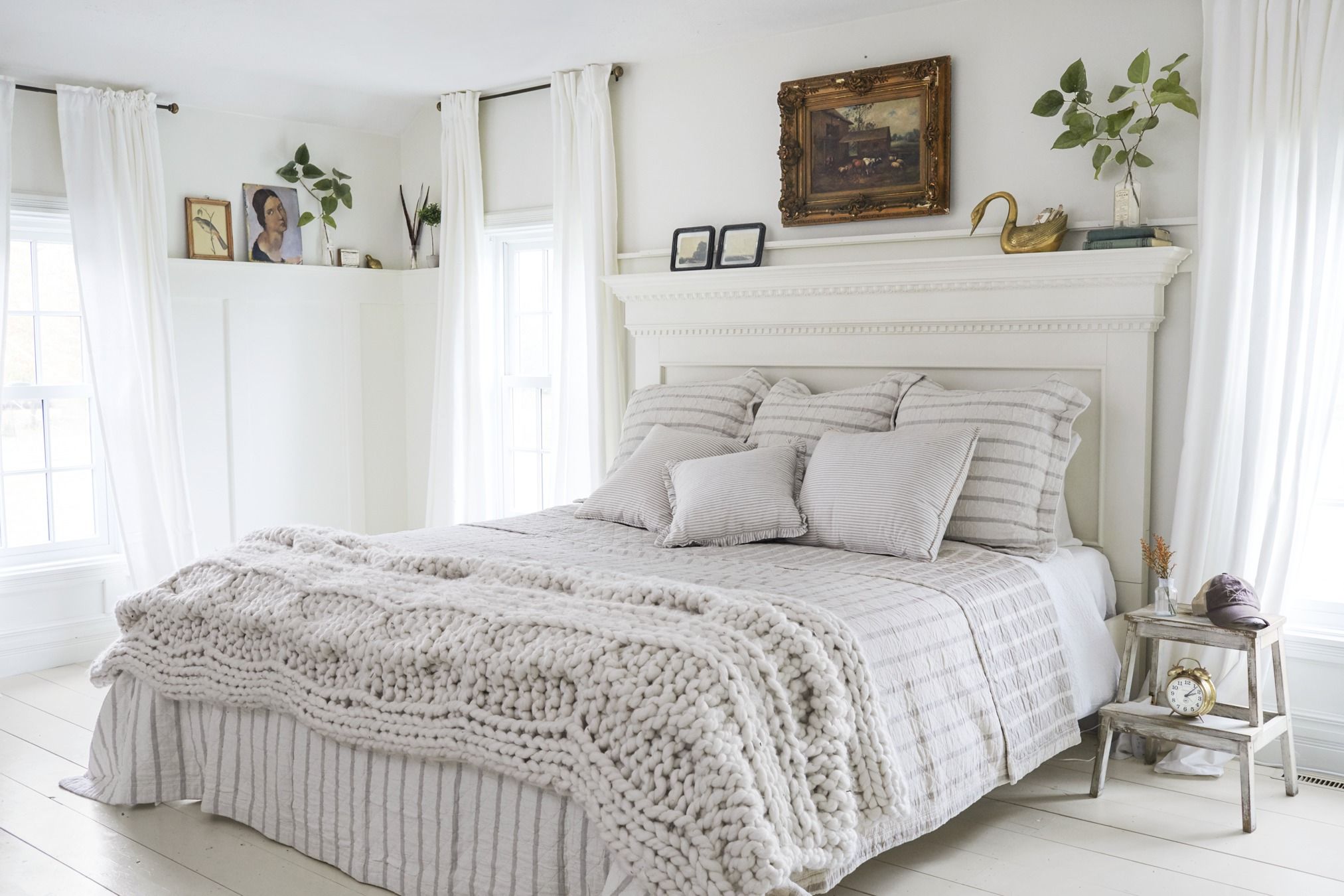
The choice of color profoundly impacts our emotions and well-being, making it essential to consider how hues influence our inner spaces. In the context of white bedroom designs, this tranquil color embodies purity, simplicity, and spaciousness, creating an environment that fosters relaxation and mental clarity. By eliminating distractions, white provides a blank canvas that allows for personal expression. Accents of soft pastels or muted tones can introduce character, while maintaining an overall sense of serenity. This subtle interplay creates a harmonious visual dialogue, guiding occupants toward a calm state of mind.
To effectively leverage the serenity of white, it helps to integrate various textures and materials, enhancing the tactile experience without overpowering the tranquil ambiance. Useful techniques include layering fabrics such as luxurious cottons, soft linens, and plush rugs to create depth. Consider incorporating elements like natural wooden furniture or metallic accents to bring warmth and life to the space. Below is a simple table illustrating different textures and their effects on a white bedroom design:
| Texture | Effect |
|---|---|
| Soft Linen | Inviting and breathable |
| Wood Grain | Warm and organic |
| Metallic Accents | Modern and reflective |
| Plush Fabrics | Cozy and sumptuous |
Choosing the Right Shade of White for Your Bedroom
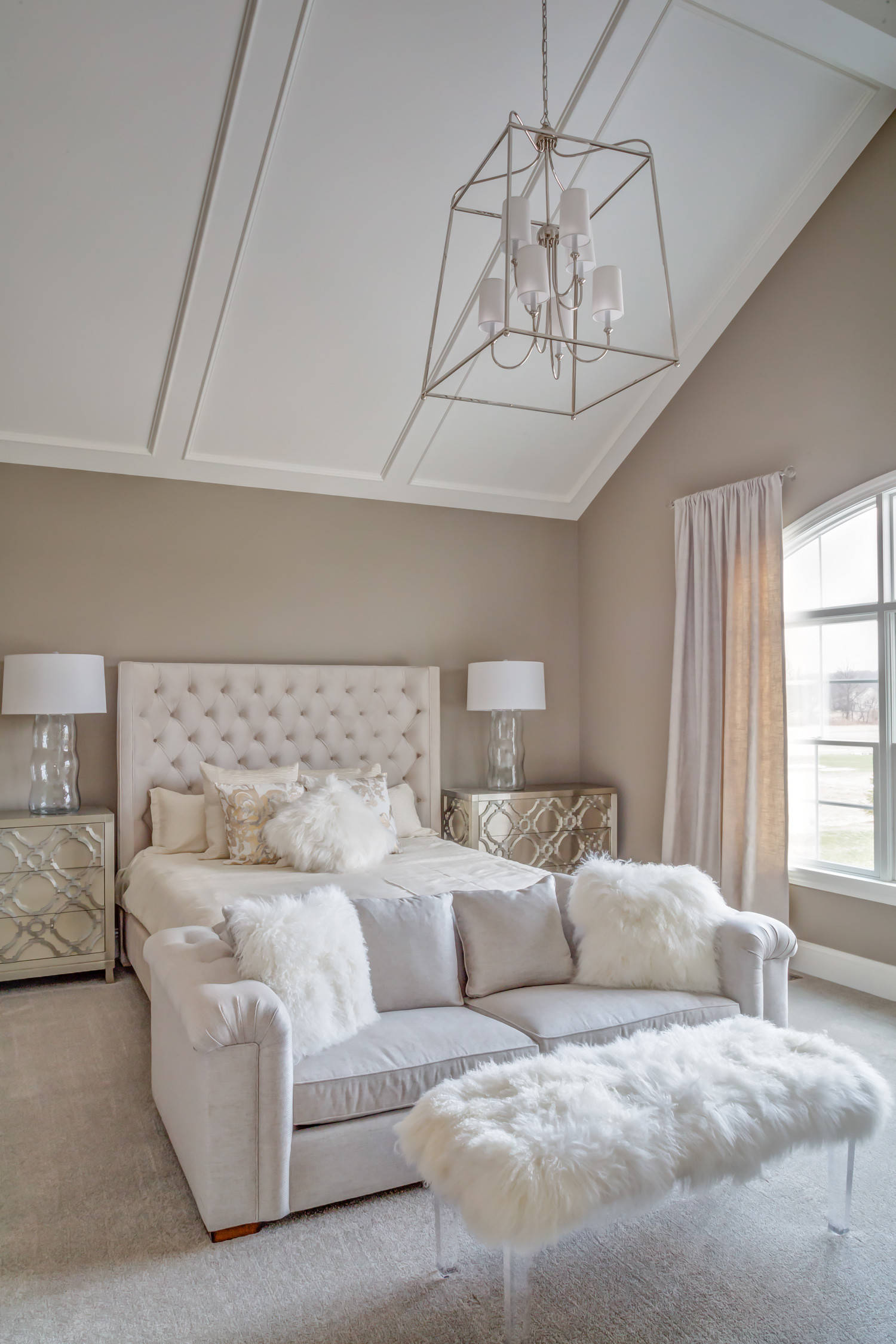
In the quest for the perfect white bedroom, the options can feel overwhelming, yet the right shade can transform your space into a serene retreat. A few popular white shades to explore include:
- Soft Ivory: A warm, creamy white that adds a touch of elegance.
- Crisp Snow: A bright and refreshing hue that radiates cleanliness.
- Cool Chantilly Lace: A subtle, cool-toned white that maintains a modern aesthetic.
- Greige: A blend of gray and beige, infusing warmth while remaining light.
Understanding the undertones in these shades is crucial. For instance, warmer whites tend to create a cozy atmosphere, ideal for snug evenings, while cooler whites can open up the room, making it feel airy and spacious. To visualize your options, consider the following brightness and undertone table:
| Shade | Brightness Level | Undertone |
|---|---|---|
| Soft Ivory | Medium | Warm Yellow |
| Crisp Snow | High | Neutral |
| Cool Chantilly Lace | Medium | Cool Blue |
| Greige | Low | Warm Gray |
Textures That Enhance the Tranquility of White Interiors

In the realm of white interiors, textures play a pivotal role in enhancing the peaceful ambiance and elevating the overall aesthetic. By incorporating various materials, you can infuse a sensory dimension that counters the starkness of a monochrome palette. Consider layering different textures such as:
- Soft linens – Use plush bedding and cushions that invite relaxation.
- Woven fabrics – Introduce natural fibers like jute or cotton for an organic feel.
- Wood accents – Light woods can provide warmth and a touch of nature.
- Textured wall finishes – Incorporate subtle patterns like stucco or linen wallpaper.
Transforming a simple white room into a serene sanctuary can also be achieved through the thoughtful use of furnishings that embody comfort and style. Seek out pieces that offer visual intrigue while maintaining a harmonious atmosphere. Elements to consider include:
| Furnishing Elements | Description |
| Accent Rugs | Choose soft, fluffy options to add warmth underfoot. |
| Textured Throws | Layer on your bed or sofa for added coziness. |
| Artisan Pottery | Incorporate handmade pieces for a touch of uniqueness. |
| Cascade Curtains | Thin, flowing drapes enhance light diffusion and softness. |
Incorporating Natural Light to Amplify Serenity
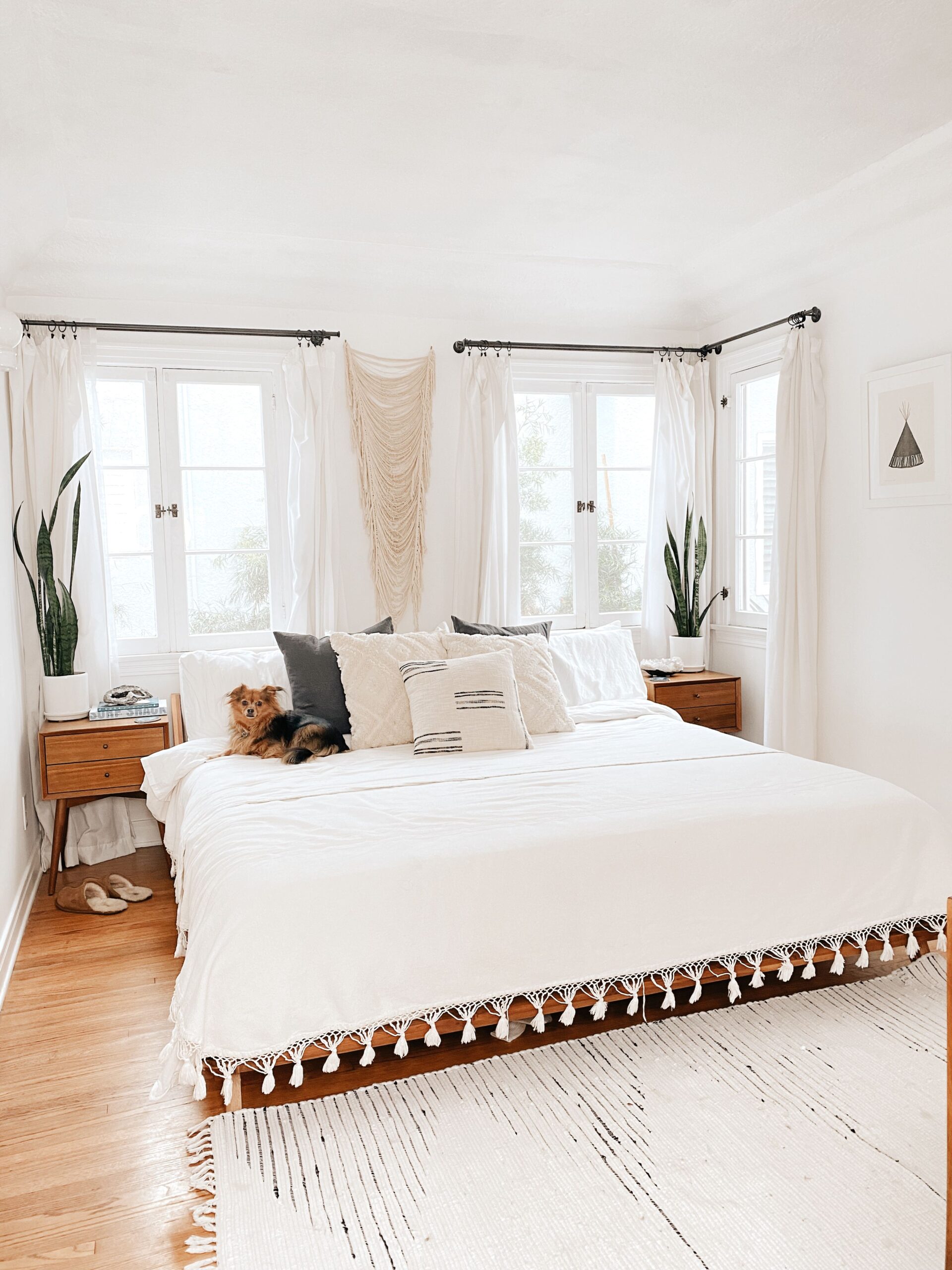
Natural light has a magical ability to transform spaces, particularly in a white bedroom where tranquility is paramount. Incorporating large windows and strategically placing mirrors can maximize the influx of sunlight, creating an ethereal atmosphere that fosters serenity. Consider opting for sheer, lightweight curtains that gently diffuse the sunlight, allowing a soft glow to envelop the room while maintaining privacy. By choosing a carefully curated color palette that includes muted tones and natural materials, the light will reflect and bounce around the room, further enhancing the peaceful aura.
Another effective way to utilize natural light is through the thoughtful arrangement of furniture. Positioning beds and seating areas near windows encourages a seamless connection to the outside world, blurring the lines between indoor comfort and outdoor beauty. Incorporate elements such as:
- Light-colored bedding to emphasize brightness
- Wooden decor that resonates with nature
- Indoor plants that complement the luminous environment
Pay attention to the time of day and how the light changes, adjusting decor accordingly to take full advantage of beauty from dawn to dusk. A harmonious blend of natural lighting and soothing design choices will transform a simple white bedroom into a serene sanctuary, reflecting the beauty of simplicity in its essence.
The Role of Minimalism in White Bedroom Designs
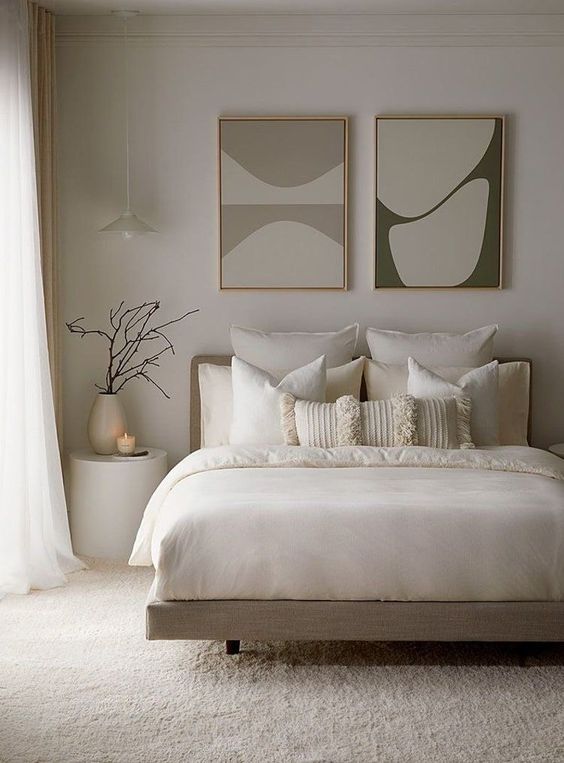
In the realm of interior design, minimalism has become synonymous with a sense of calm and clarity, particularly in the context of white bedroom designs. This approach strips away excess, allowing space to breathe and emerge as a sanctuary for relaxation. The understated palette of whites, complemented by natural light, creates a soothing atmosphere that promotes restful sleep and mental clarity. Elements such as geometric furniture, soft textiles, and thoughtfully curated accessories come together to cultivate a serene environment, transcending mere aesthetics into a mindful living experience.
From a functional perspective, minimalism encourages the use of essential items, fostering a sense of order and tranquility. By carefully selecting pieces with both style and purpose, homeowners can achieve a streamlined look that exudes sophistication without feeling cluttered. Considerations such as simple bedding, subtle artwork, and organic textures can elevate a white bedroom while maintaining its minimalist appeal. Here are some key elements that define minimalism in such designs:
- Neutral Color Palettes: Focus on whites, creams, and soft grays.
- Functional Furniture: Choose sleek, multi-purpose items.
- Natural Lighting: Emphasize large windows and light curtains.
- Decluttered Spaces: Keep surfaces clear and organized.
Selecting Furniture that Complements a Calming Aesthetic
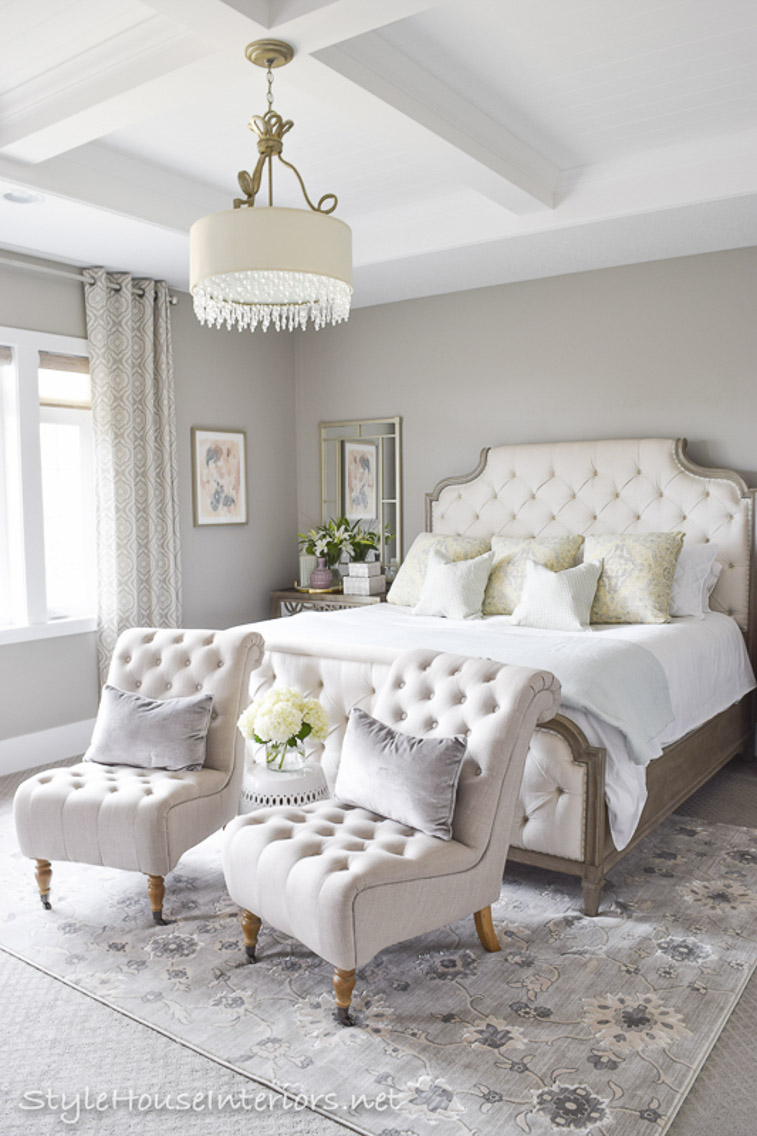
When choosing furniture for a tranquil white bedroom, it’s essential to focus on pieces that promote a sense of calm and unity. Look for soft lines and gentle curves that create a serene atmosphere, such as upholstered beds or rounded bedside tables. These elements add an inviting touch, allowing the space to breathe. Consider incorporating a neutral color palette with shades of soft beige, light gray, or even pastel accents that enhance the serene vibe. This can help maintain a harmonious look while contributing to the overall feeling of peace.
To further enrich the atmosphere, opt for natural materials that connect your space to the tranquility of nature. Items such as wooden furniture, wicker accents, and organic textiles can infuse comfort and warmth. Additionally, layering textures can add depth without overpowering the calming aesthetic. Focus on subtle decorative elements, such as:
- Textured throws
- Fluffy pillows
- Soft area rugs
These not only enhance the soothing environment but also create a cozy retreat that invites relaxation and mindfulness.
Creating a Cozy Atmosphere with Soft Linens and Fabrics

Soft linens and fabrics are essential components in crafting a serene bedroom that exudes warmth and tranquility. Choosing the right materials can transform a sterile space into a haven for rest and relaxation. The magic lies in the details, from the sumptuous feel of Egyptian cotton sheets to the airy touch of linen throws draped over furniture. Consider incorporating elements like:
- Layered Bedding: Combine different textures such as plush quilts with delicate duvets.
- Decorative Pillows: Use various shapes and sizes to create depth and comfort.
- Curtains: Opt for sheer fabrics to allow natural light to filter gently.
Incorporating these textiles not only enhances visual appeal but also invites tactile comfort. A strategically placed soft area rug can anchor the room, making it feel cozier while also providing a plush surface underfoot. When selecting colors, soft whites, creamy ivories, and gentle pastels create a peaceful palette that complements the room’s airy ambiance. By choosing the right combination of linens and fabrics, you create an inviting atmosphere that encourages relaxation and serenity.
| Fabric Type | Properties | Best Use |
|---|---|---|
| Egyptian Cotton | Luxuriously soft and breathable | Bedding |
| Linen | Lightweight and absorbent | Curtains and throws |
| Wool | Warm and insulating | Area rugs |
| Microfiber | Durable and easy to clean | Pillows and bedspreads |
Strategic Use of Greenery: Bringing Nature Indoors
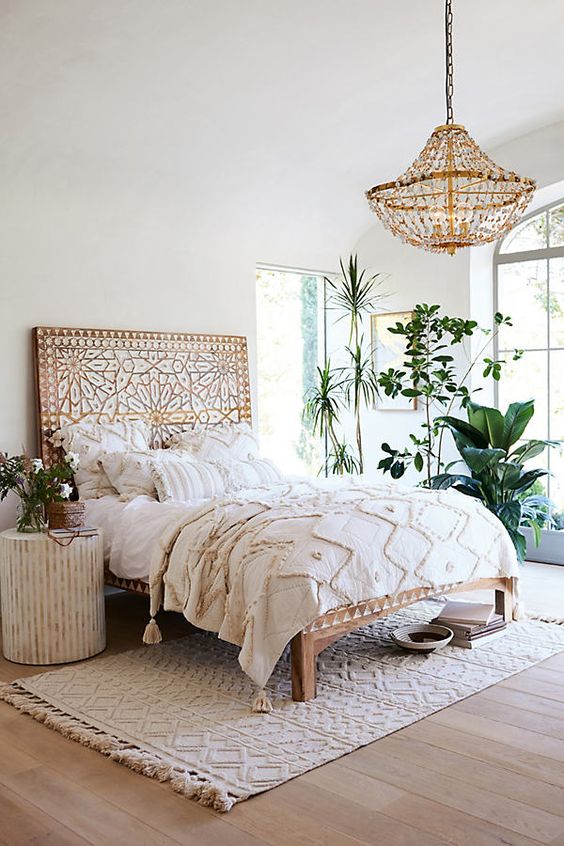
| Plant Type | Light Needs | Care Level |
|---|---|---|
| Snake Plant | Low to Bright | Low |
| Pothos | Low to Bright | Easy |
| Peace Lily | Low Light | Medium |
| ZZ Plant | Low Light | Very Easy |
Art and Decor: Choosing Pieces that Elevate Calmness
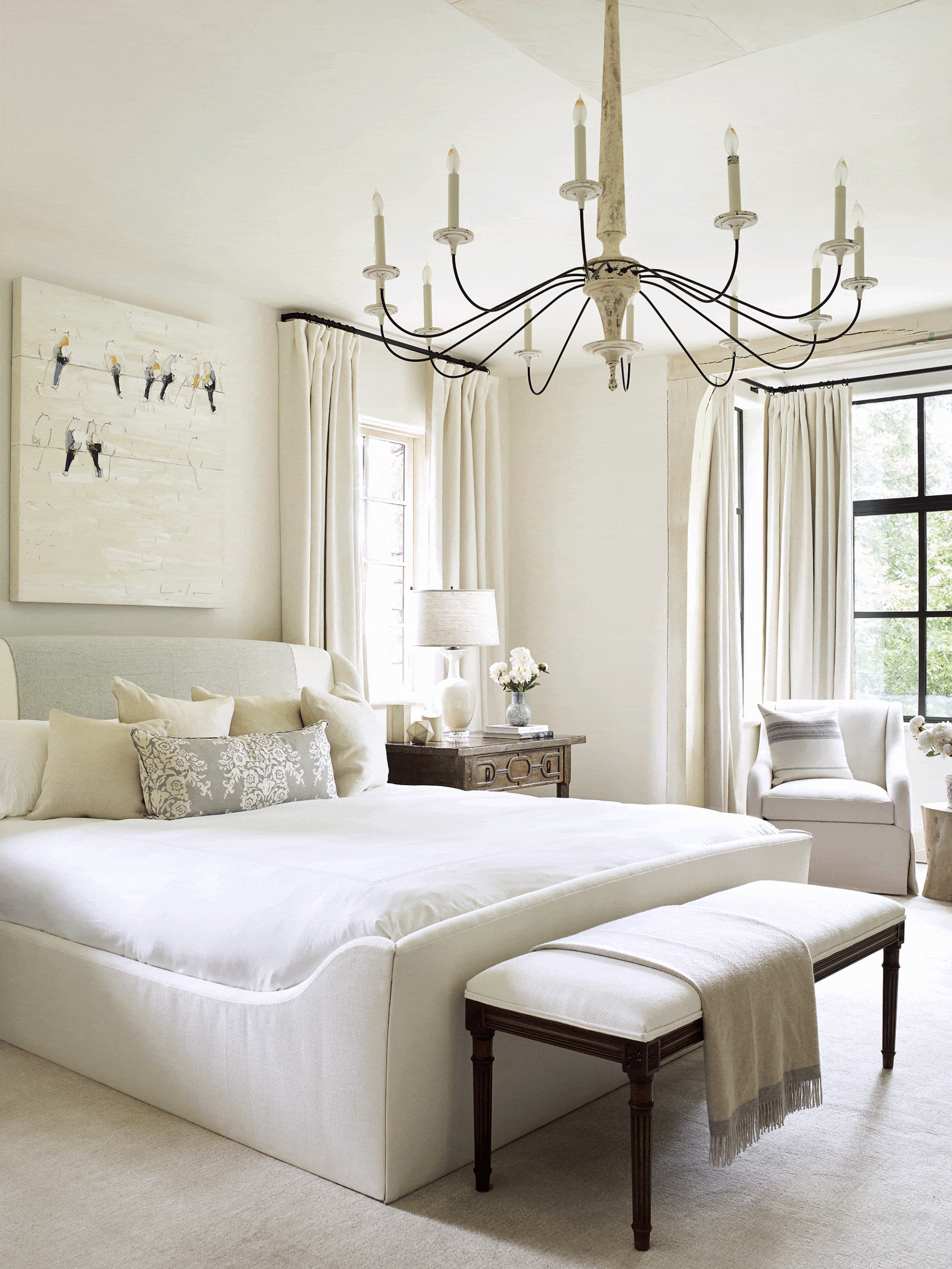
- Minimalist wall art: Choose landscapes or abstract pieces in shades of white, beige, or pastels to reflect calmness.
- Natural elements: Incorporate botanical prints or photographs of serene environments, like forests or oceans, to ground the space.
- Textured textiles: Soft throw blankets or cushioned pillows in muted tones can enhance the comfort of your bedroom.
In addition to artwork, decor pieces play a vital role in cultivating a tranquil bedroom. Consider investing in simple yet elegant items that add to the serene vibe without overwhelming the senses. An ideal selection includes:
| Item | Description |
|---|---|
| Soft diffusers | Use essential oil diffusers to fill the air with calming scents like lavender. |
| Subtle lighting | Opt for warm-toned lamps or fairy lights to create a soothing glow. |
| Natural wood accents | Incorporate wooden elements to bring warmth and organic appeal to the space. |
Lighting Considerations for a Serene Bedroom Environment

Creating a serene atmosphere in your bedroom starts with thoughtful lighting choices that harmonize with your white design scheme. Opt for soft, diffused lighting to maintain a tranquil ambiance. Consider using layered lighting to adjust the mood as needed, including a combination of ceiling fixtures, bedside lamps, and wall sconces. This not only enhances functionality but also allows you to seamlessly transition between tasks, whether you’re reading a book or preparing for sleep. Make sure to select warm-toned bulbs that create a cozy and inviting glow, complementing the purity of white without harsh contrasts.
Another important factor is the incorporation of natural light, which can make your serene space feel more vibrant and alive. Choose light, airy window treatments that allow sunlight to filter through softly, while still providing privacy. You may also consider installing mirrors to reflect natural light, effectively brightening the room while increasing its sense of space. Here’s a simplified guide to effective lighting options:
| Lighting Type | Purpose | Recommended Fixture |
|---|---|---|
| Ceiling Lights | General illumination | Flush mount or pendant lights |
| Bedside Lamps | Task lighting | Accent table lamps |
| Wall Sconces | Ambient light | Plug-in or hardwired options |
Incorporating Technology: Smart Solutions for Peaceful Spaces
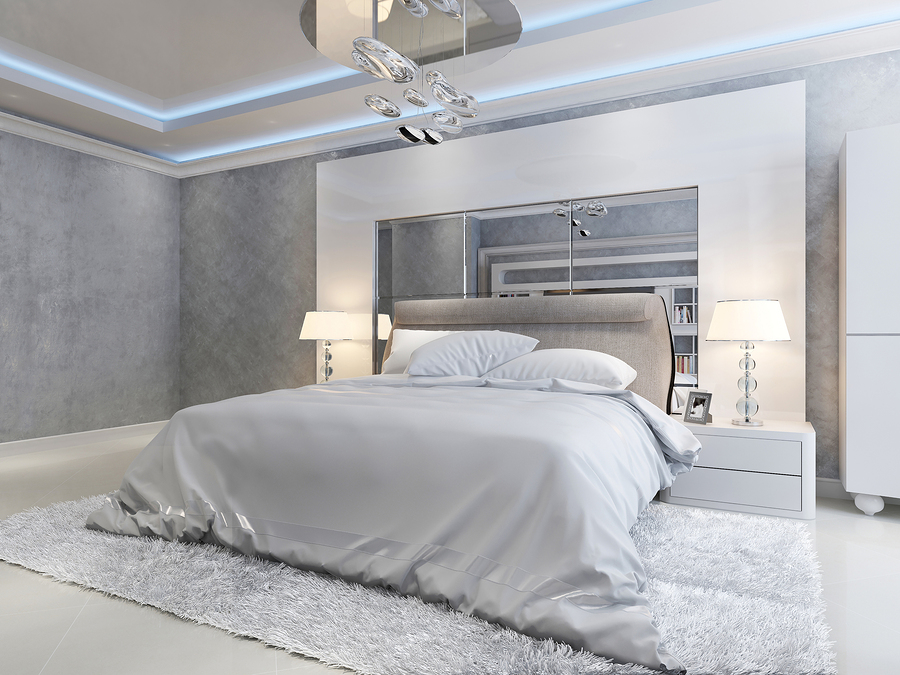
- Smart Speakers: Fill the room with soothing sounds or nature playlists at your command.
- Temperature Control: Smart thermostats ensure a comfortable climate, adapting to your preferences.
- Air Purifiers: Enhance air quality and create a refined, healthy environment.
Beyond aesthetics, having a tech-savvy bedroom can significantly enhance your overall well-being. With sleep-tracking apps and devices, you can monitor your sleep quality, making adjustments to your routine as necessary. Furthermore, incorporating smart scents through diffusers can subtly influence your mood and promote relaxation. Here’s a quick overview of how different technologies can enhance serenity in your space:
| Technology | Benefit | Serenity Impact |
|---|---|---|
| Smart Lighting | Customizable brightness & warmth | Creates a soothing atmosphere |
| Automated Shades | Control natural light easily | Enhances comfort & privacy |
| Smart Air Purifier | Improves air quality | Promotes restful sleep |
Creating a Focal Point in an All-White Bedroom
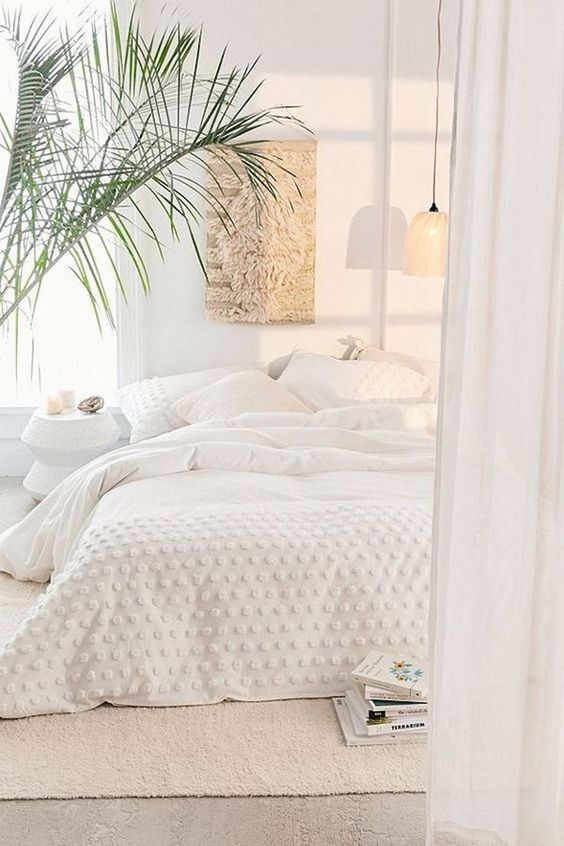
Designing an all-white bedroom presents a unique opportunity to play with textures and layers, creating a serene atmosphere while still keeping the space visually interesting. Incorporating elements like woven textiles, soft throws, and plush rugs can add depth and warmth. Consider introducing a statement piece, such as a stunning piece of art or an elegant chandelier, to draw the eye. The juxtaposition of sleek surfaces against textured materials can enhance the overall aesthetic, allowing the room to feel inviting rather than stark.
Another effective strategy is to utilize furniture and decor in varying shades of white or cream to create subtle contrast. Choose accents such as decorative pillows, vases, and artwork that incorporate different materials—wood, metal, and fabric—to enliven the environment. Incorporating greenery through plants or floral arrangements can also introduce a touch of color while complementing the white scheme. By thoughtfully integrating these elements, the bedroom will not only serve as a tranquil retreat but also as a testament to the beauty of monochromatic design.
Personalizing Your Space Without Overwhelm
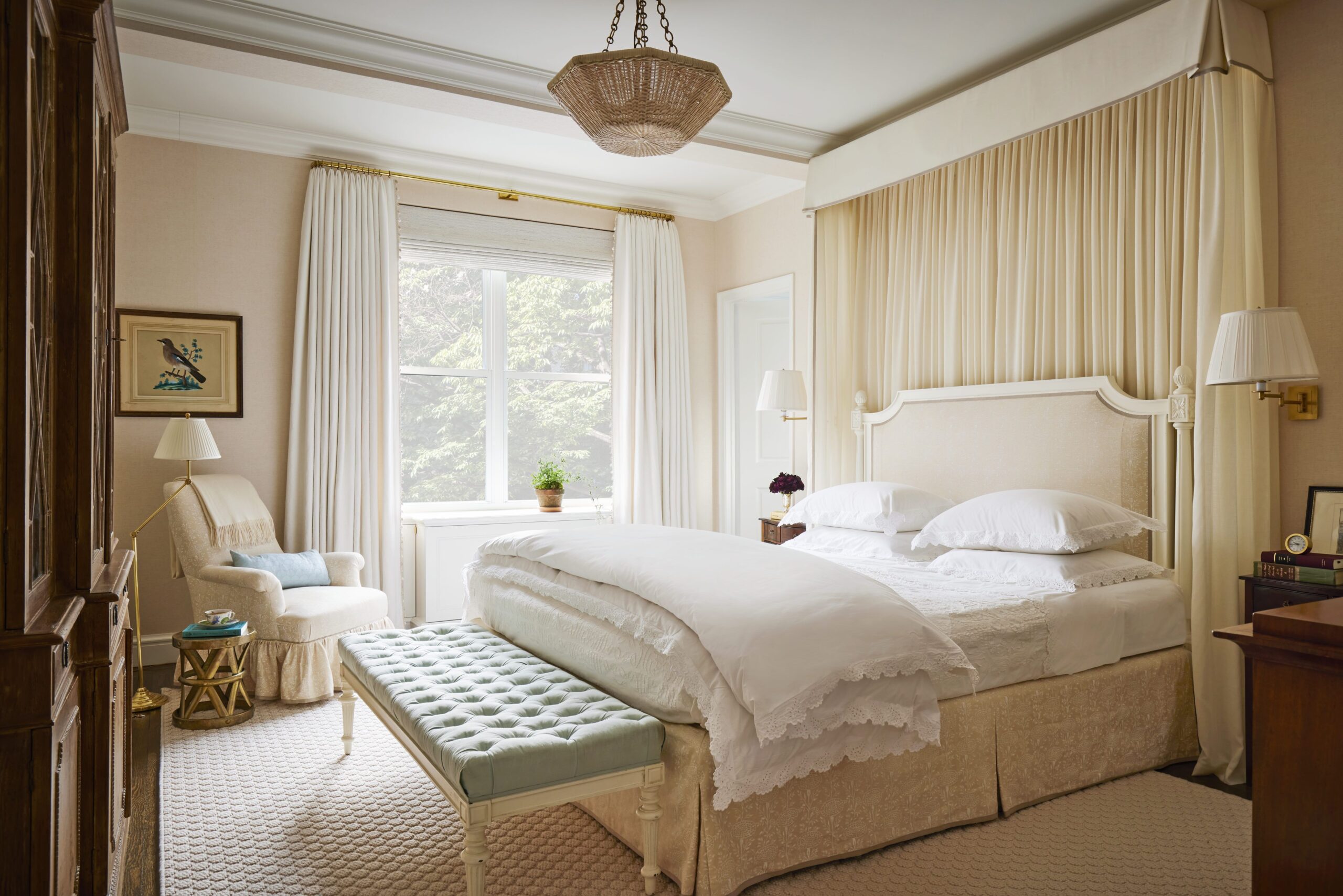
Creating a serene white bedroom is all about balancing aesthetics with personal touch, ensuring your space feels uniquely yours without becoming chaotic. Consider incorporating elements that resonate with your style while adhering to a soothing color palette. Here are some effective strategies to personalize your space:
- Select Textures: Introduce different fabrics like soft throws, plush pillows, or woven rugs in subtle shades to add dimension.
- Incorporate Artwork: Choose meaningful pieces that evoke calmness—think abstract pieces or nature-inspired prints that blend seamlessly with your theme.
- Accessorize Mindfully: Use decorative objects that tell a story or have sentimental value, such as cherished books or unique souvenirs.
To further enhance the personalized ambiance, consider varying the lighting sources in your bedroom. Layered lighting can dramatically transform the atmosphere, allowing for adaptability based on mood or time of day. Below is a simple overview of lighting options to consider:
| Lighting Type | Description |
|---|---|
| Ambient Lighting | General lighting that illuminates the entire room, fostering a relaxed environment. |
| Task Lighting | Focused lights such as bedside lamps for mindful activities like reading or studying. |
| Accent Lighting | Features like wall sconces or LED strips that highlight artwork or architectural elements. |
Layering Whites: Exploring Different Tones and Textures
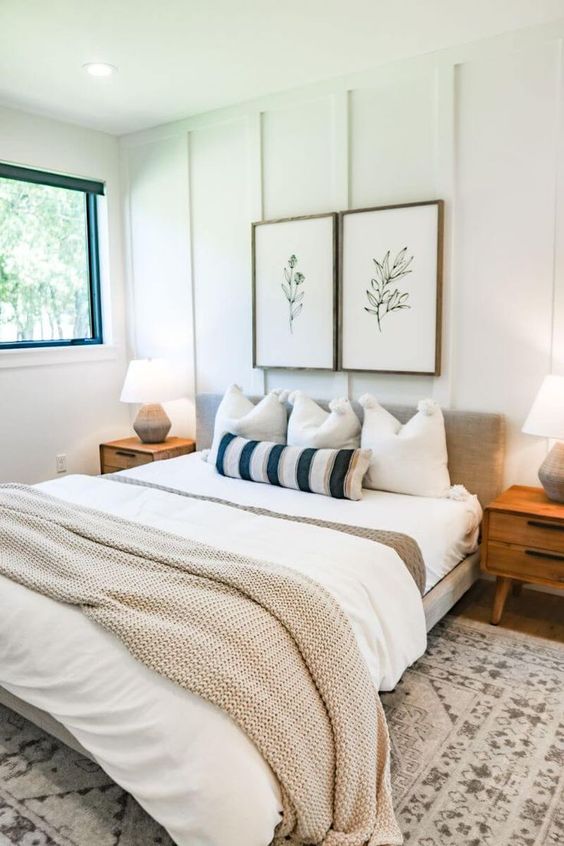
The beauty of a white bedroom goes beyond mere monochrome; it is an invitation to explore a symphony of tones and textures. Each layer can contribute to a serene yet dynamic atmosphere, making the room feel alive without overwhelming the senses. Consider incorporating elements like:
- Soft Ivory – Perfect for bedding, it adds warmth to the overall palette.
- Crisp Cotton – Great for curtains, providing an airy feel while filtering light.
- Textured Wool – Ideal for throws or pillows, enhancing the comfort of the space.
- Gleaming White Marble – For bedside tables or lamps, it lends an elegant touch.
Blending different whites, from off-white to snow-white, in furnishings and decor can create a comprehensive experience. To maintain a cohesive look, consider using a color chart that helps visualize how shades interact. A simple comparative table can provide clarity and inspire choices:
| Shade | Texture | Recommended Use |
|---|---|---|
| Warm White | Soft | Bedding |
| Cool White | Sleek | Furniture |
| Off-White | Textured | Rugs |
| Bright White | Glossy | Accents |
By thoughtfully layering different white hues and textures, your bedroom can evoke feelings of peace and tranquility, making it a perfect sanctuary for rest and relaxation.
The Impact of Mirrors in Expanding Visual Space
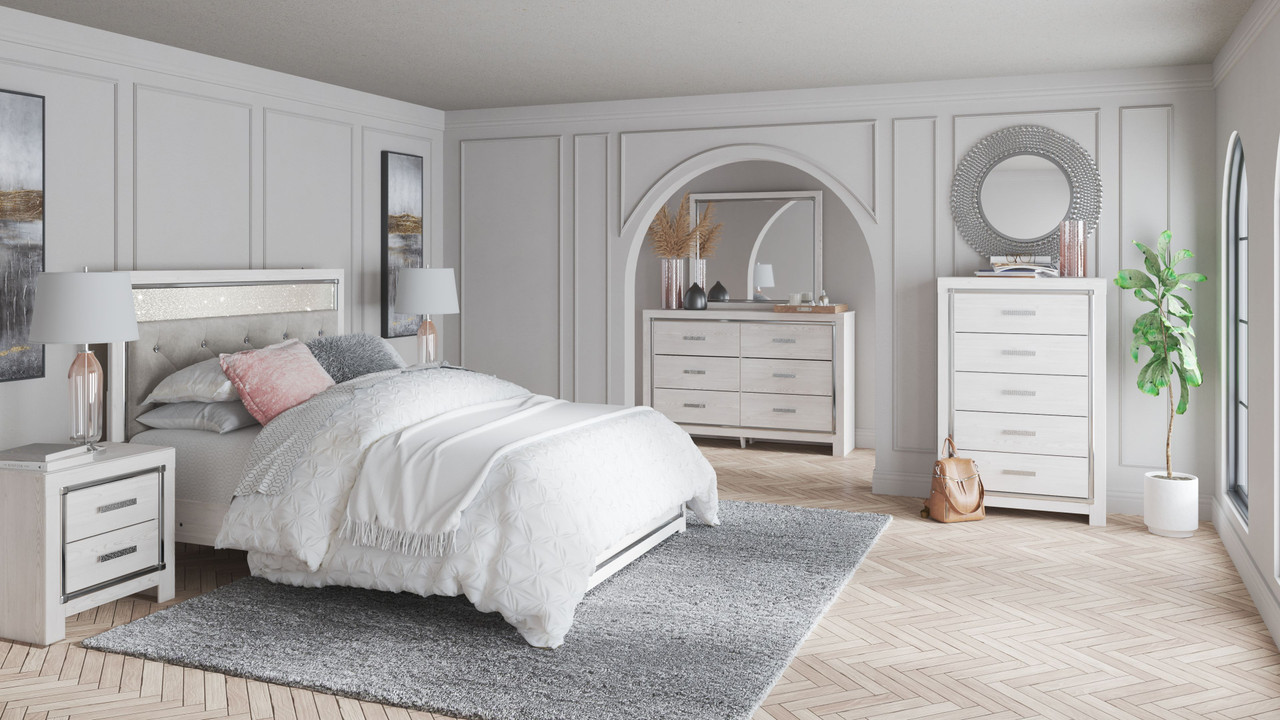
Mirrors are not just functional objects; they are transformative elements that can redefine the boundaries of any room, especially in a white bedroom sanctuary. By strategically placing mirrors, you can create an illusion of grandeur and openness, allowing the eye to wander and filling the space with light. This reflective quality enhances the serene atmosphere so desired in a bedroom, enabling natural light to bounce off surfaces, illuminating every corner and giving a bright, airy feel to the space. Consider these creative ideas for integrating mirrors:
- Accent Mirrors: Choose uniquely shaped mirrors as focal points on your walls to draw the eye and add character.
- Mirror on Opposite Walls: Placing mirrors across from windows amplifies natural lighting and creates a visual extension of the outdoors.
- Mirrored Furniture: Incorporate pieces like nightstands and dressers that feature mirrored surfaces for an elegant touch.
When it comes to utilizing mirrors in your design, consider their placement carefully. A well-placed large mirror can not only reflect beautiful elements from your decor but also encourage a sense of depth in the room. Below is a table showcasing some effective mirror placement strategies:
| Placement | Effect |
|---|---|
| Behind the Bed | Creates a dramatic focal point and enhances spaciousness. |
| Above Dressers | Reflects beauty and adds functional flair for getting ready. |
| Near Windows | Maximizes natural light distribution and connects the indoor space with nature. |
Balancing White with Subtle Accents for Depth
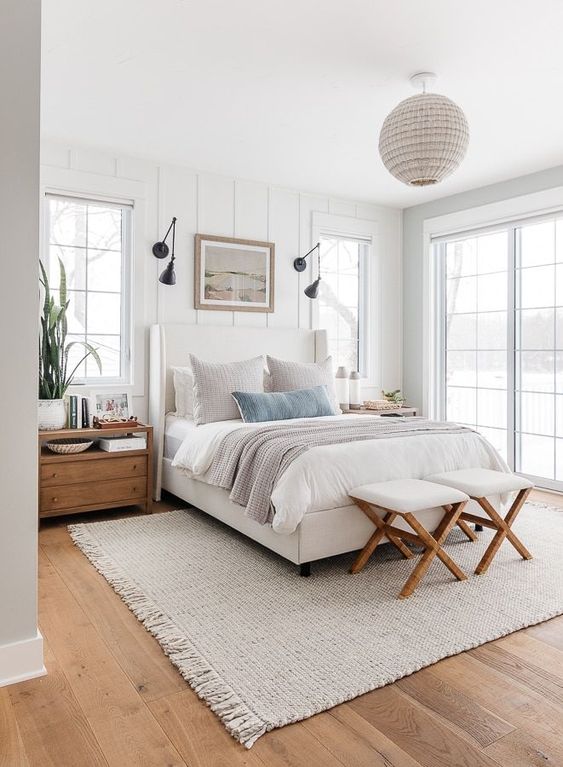
In a white bedroom, the interplay of light and shadow can breathe life into the space. Incorporating subtle accents not only enhances depth but also serves to enliven the tranquility of an otherwise monochromatic palette. Consider layering textures such as a cozy plush throw or a knit blanket on a white bedspread; these elements add a tactile dimension that invites touch and comfort. Decorative pillows in muted colors like dusty rose, soft gray, or pale blue can provide visual interest without overpowering the serene backdrop. A simple woven basket by the bed can bring in an organic element that underlines the aesthetic while offering practicality.
Artful lighting is another layer to consider for enriching your white bedroom design. Implementing a mix of ambient, task, and accent lighting creates a warm atmosphere, enhancing the bedroom’s peaceful vibe. For a sophisticated touch, you might choose a sleek chandelier or a delicate wall sconce to contrast with the starkness of white walls. Small decorative pieces such as a framed mirror or a ceramic vase can serve as focal points, drawing the eye and infusing personality. By adhering to a cohesive yet varied color scheme, these accents will not only break the monotony but also cultivate a sanctuary that feels both calming and inviting.
Seasonal Decorations that Maintain Serenity
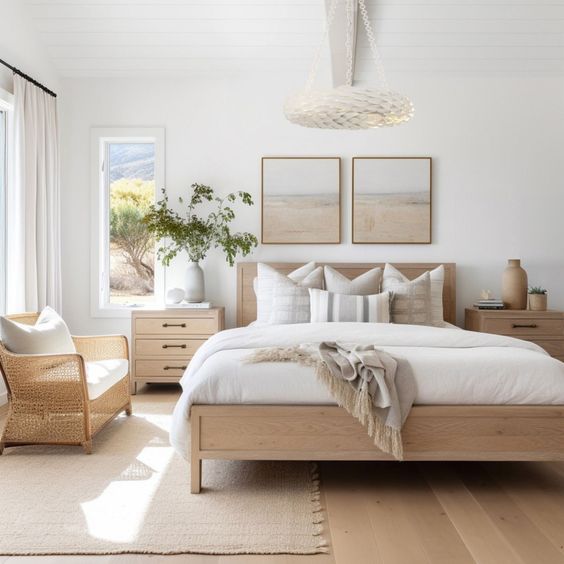
- Whimsical white fairy lights gently draped across windows or headboards to mimic the glow of moonlight.
- Subtle seasonal flowers in soft hues, like white lilies or pale tulips, to bring life without disrupting the calm color palette.
- Delicate, airy curtains that billow softly with the breeze, enhancing the serene environment.
Additionally, incorporating neutral-toned seasonal accents can infuse warmth while maintaining tranquility. Opt for decor that adds layers of comfort, such as:
- Cozily patterned throw blankets in beige or light gray, draped over a simple ottoman.
- Artisan-crafted ceramic vases in muted earthy tones to hold seasonal branches or dried flowers.
- Soft, plush area rugs that provide warmth underfoot during colder months.
Common Mistakes to Avoid in White Bedroom Designs
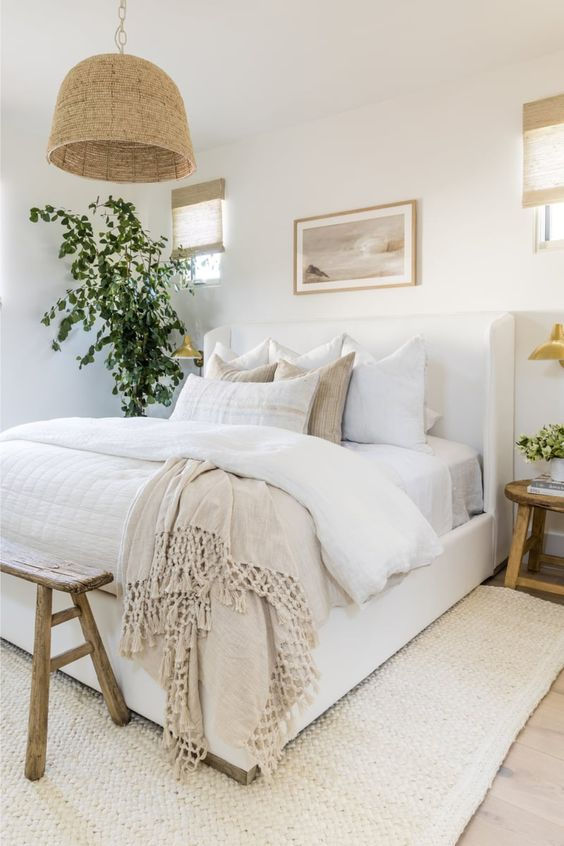
When designing a white bedroom, it’s essential to steer clear of a few common pitfalls that can detract from the serene atmosphere you’re aiming for. Overusing White is a frequent mistake; while it’s the primary hue, flooding the space with only this color can make it feel sterile and uninviting. Instead, balance the white with varying textures and complementary colors. Consider incorporating warm shades like soft beige or muted pastels to add depth and personality.
Another misstep is neglecting lighting, which plays a crucial role in a white bedroom. Often, designers rely on overhead lights, which can create harsh shadows and diminish the warmth of the space. Instead, utilize a combination of ambient, task, and accent lighting options. This could include bedside lamps, wall fixtures, and even decorative candles to create a cozy and inviting atmosphere in the evenings. Additionally, consider the placement of natural light sources by using sheer curtains that allow sunlight to filter through, emphasizing the room’s tranquility while preventing it from feeling washed out.
Inspiring Examples of Successful White Bedroom Interiors
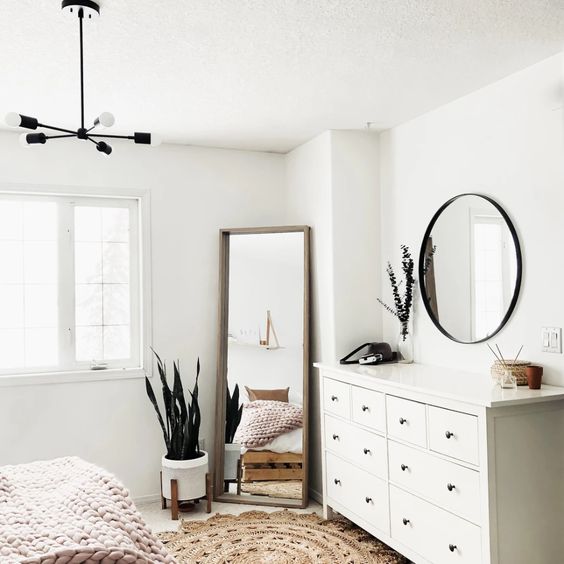
One stunning example of a white bedroom interior can be found in a modern loft, where clean lines and minimalist design converge to create a tranquil escape. The space features a low-profile white platform bed, adorned with textured white linens that offer a layered look without overwhelming the senses. Large windows allow natural light to fill the room, highlighting the subtle variations in white from the walls to the bedding. Accents of greenery are introduced through strategically placed houseplants, contrasting beautifully with the palette while promoting a sense of calm and serenity.
In another inspirational setting, a cozy cottage bedroom showcases vintage white furnishings paired with contemporary touches. The walls are dressed in soft, matte white paint, enhancing the room’s airy feel. A charming white wrought-iron bed serves as the focal point, enriched by a quilted coverlet and a cluster of soft, fluffy pillows. Decor elements like antique white nightstands and a delicate lace curtain enhance the room’s warmth, while a vintage chandelier adds just the right amount of charm without distracting from the overarching theme of simplicity. This harmonious blend demonstrates that white interiors can be both inviting and stylish.
Maintenance Tips for Keeping Your White Bedroom Pristine

Keeping a white bedroom looking its best requires a bit of dedication, but the reward is a serene and inviting space. To prevent color fading and staining, consider the following maintenance tips:
- Regular Dusting: Use a microfiber cloth to regularly wipe down surfaces. This prevents dust buildup, which can dull the brightness of white furnishings.
- Wash Bedding Weekly: Freshen up your bedding once a week to keep it looking crisp. Opt for white fabrics that are machine washable for convenience.
- Vacuum and Clean Floors: Use a vacuum with a HEPA filter to pick up dust and allergens. For hard floors, a damp mop can help maintain their shine.
Accidents happen, especially in a pristine space. Quick action is key to preventing stains from becoming permanent. To effectively tackle spills and stains, keep the following cleaning essentials on hand:
| Stain Type | Recommended Treatment |
|---|---|
| Coffee | Blot with cold water, then apply a mixture of detergent and white vinegar. |
| Ink | Apply rubbing alcohol to a cloth and gently dab the stain. |
| Food | Scrape off excess, then use warm water and dish soap to clean. |
Budget-Friendly Ideas for Achieving a Serene Look
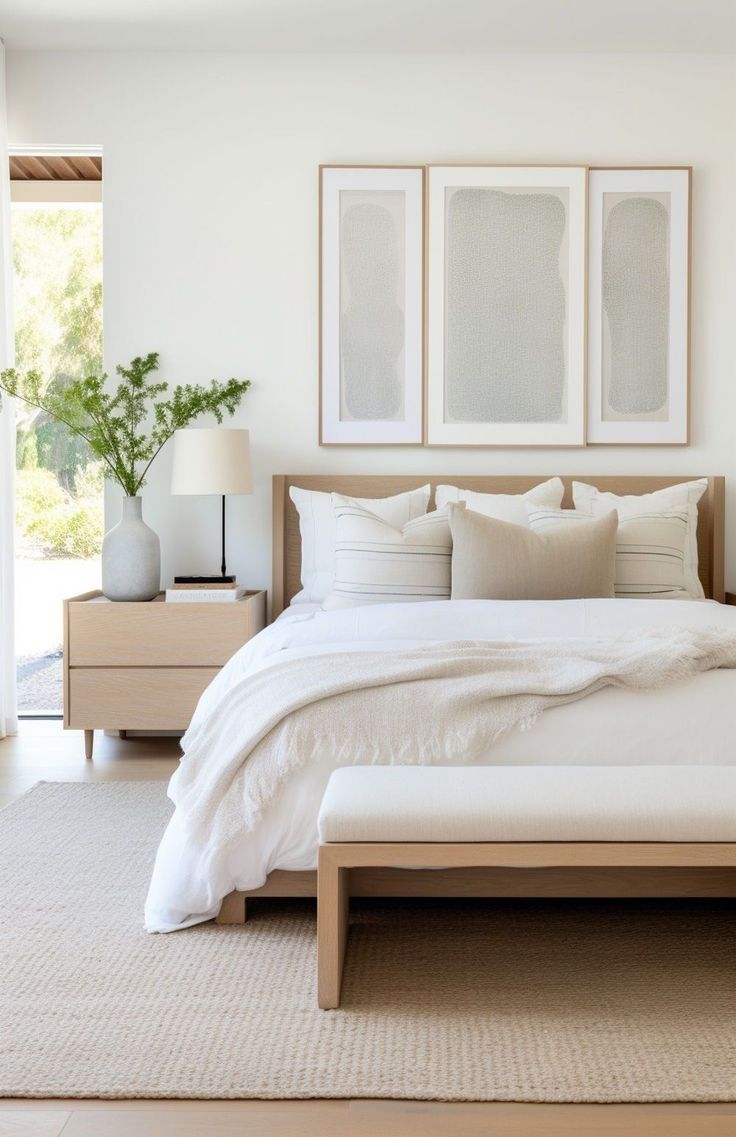
Achieving a serene bedroom aesthetic doesn’t have to break the bank. Start by investing in affordable textiles that can instantly elevate your space. Look for soothing white bed linens, which can create a cohesive look while providing comfort. You can also experiment with various textures—consider mixing cotton, linen, and even a soft throw blanket to add warmth without overwhelming your palette. To emphasize tranquility, opt for lightweight sheer curtains that gently filter sunlight, casting a soft glow throughout your room.
Another budget-friendly approach is to incorporate minimalist decor that promotes simplicity and calmness. Here are some ideas to enhance your serene ambiance:
- Utilize a few houseplants to bring nature indoors; plants like peace lilies or snake plants are both affordable and low-maintenance.
- Craft your own artwork using white frames and minimalist designs—this adds a personal touch without incurring high costs.
- Choose functional yet stylish storage solutions like woven baskets or minimalist shelves to maintain an uncluttered environment.
The Importance of Decluttering for Psychological Peace

In today’s fast-paced world, the chaos of clutter often seeps into our mental space, leaving little room for tranquility. A minimalist approach is not just an aesthetic choice but a pathway to clarity and peace. By eliminating excess belongings, we create an environment that fosters focus and creativity. Each item we choose to keep should serve a purpose or bring joy, transforming our spaces into sanctuaries that reflect our inner calm. To embark on this journey, consider these essential tips:
- Assess and Evaluate: Regularly take stock of what you own and its significance in your life.
- Establish Zones: Create designated areas for different activities, ensuring each space promotes its intended purpose.
- Practice Mindfulness: Be intentional about what you allow into your home, preventing future clutter accumulation.
As we clear away the physical mess, we also pave the way for emotional and mental clarity. The benefits of decluttering reach far beyond mere organization; they positively impact our mood and overall well-being. A serene environment enhances our ability to relax, think clearly, and enjoy life’s simple pleasures. For those considering a transformation, here are some notable effects of a clutter-free space:
| Benefit | Description |
|---|---|
| Reduced Stress | Clutter can overwhelm the mind; a tidy space promotes relaxation. |
| Increased Productivity | A clean environment enhances focus and efficiency. |
| Enhanced Creativity | Less distraction leads to greater inspiration and innovation. |
 Embracing Individuality within a White Palette
Embracing Individuality within a White Palette
In a realm dominated by the soothing embrace of white, individuality can bloom like delicate wildflowers. The key to achieving a unique touch lies in the choice of textures, patterns, and decorative elements. Consider blending luxurious materials—such as a plush, white faux fur throw over a sleek cotton duvet—or mixing a variety of finishes, like matte and glossy accents, to create depth and interest. Incorporating items with a personal narrative, such as family heirlooms or art pieces, can transform an otherwise simple space into a haven that tells your story.
Complementing elements can amplify the serene atmosphere of a white bedroom, making it distinctly yours. Think about the integration of subtle pops of color through accessories, such as cushions or wall art, which can introduce personality without overwhelming the tranquility. Additionally, the use of layered lighting options, from soft bedside lamps to ethereal pendant lights, can enhance the ambiance, allowing the space to morph with your mood. Don’t shy away from inorganic shapes or sculptural pieces; these can serve as fascinating focal points against the fluid backdrop of white, ensuring your bedroom is a reflection of your unique self.
| Element | Description |
|---|---|
| Textiles | Play with layers of fabric to add warmth and dimension. |
| Artwork | Incorporate personal pieces that speak to your aesthetic. |
| Lighting | Use varied sources to create a customizable atmosphere. |
| Plants | Add life and vibrancy with low-maintenance greenery. |
 Q&A
Q&A
Q: Why choose a white bedroom design?
A: Choosing a white bedroom design can create a serene and tranquil environment, promoting relaxation and peace. The color white embodies simplicity and purity, making it an ideal canvas for personal expression while fostering a calming atmosphere conducive to restful sleep.

Q: How can white bedrooms avoid looking bland or overly sterile?
A: To avoid a bland or sterile appearance, consider layering different textures, such as plush linens, knitted throws, and velvet cushions. Incorporating natural elements, such as wooden furniture or potted plants, can also add warmth and visual interest. Additionally, mixing shades of white and off-white can create depth and dimension.
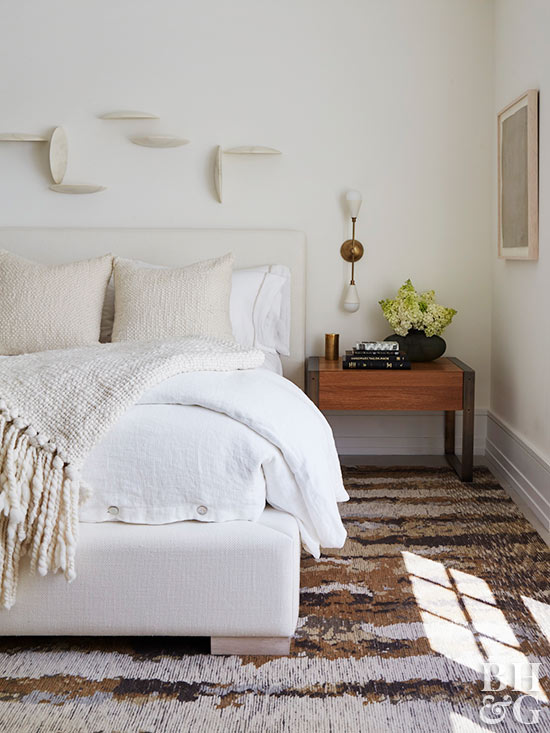
Q: What are some effective ways to incorporate color into a white bedroom design?
A: You can introduce color through accessories such as artwork, decorative pillows, and area rugs. Consider using soft pastels or bold accents, depending on your style. Even a single statement piece, like a vibrant armchair or a colorful throw blanket, can enliven the space without overwhelming the serene ambiance.

Q: How does lighting impact the mood in a white bedroom?
A: Lighting plays a crucial role in enhancing the mood of a white bedroom. Natural light can make the space feel airy and open, while soft, warm artificial lighting can create a cozy atmosphere during evening hours. Layered lighting, including overhead fixtures, bedside lamps, and accent lights, can elevate the room’s overall tranquility.
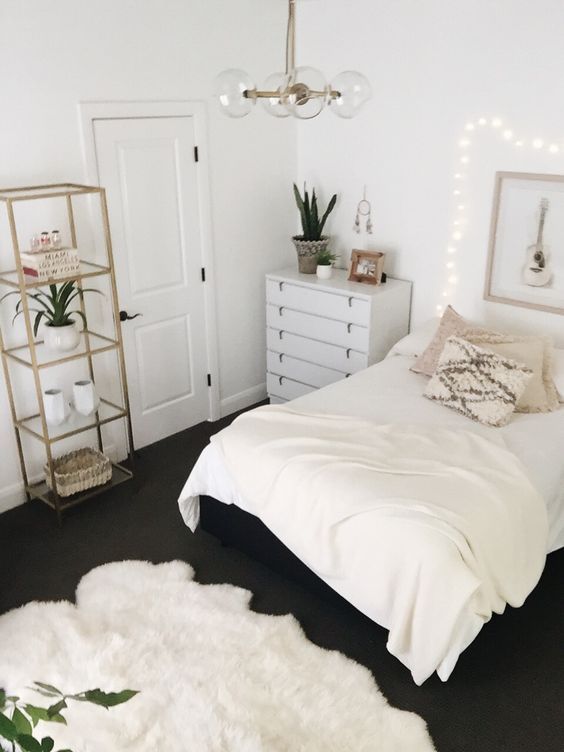
Q: What role do patterns play in white bedroom designs?
A: Patterns can add visual interest while maintaining the overall calm of a white bedroom. Consider incorporating subtle patterns through textiles, such as a patterned duvet cover or pillows, or through wallpaper featuring delicate designs. Geometric shapes, floral motifs, or even a monochromatic print can infuse personality without overwhelming the serene palette.
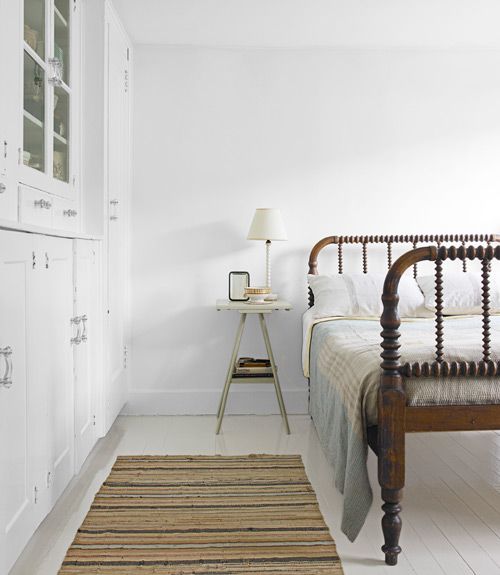
Q: Are there specific styles that work well with a white bedroom design?
A: White bedroom designs can complement a variety of styles, from minimalist and Scandinavian to bohemian and coastal. The key is to align the white base with accents that resonate with your chosen style—whether that’s sleek lines for modern minimalism or eclectic decor for bohemian flair.

Q: How can I maintain the cleanliness and brightness of a white bedroom?
A: To maintain a clean and bright appearance, opt for high-quality, washable textiles, and regularly tidy up to prevent clutter. Choose surfaces that are easy to wipe down, and consider decluttering frequently. Incorporating storage solutions, such as baskets or decorative boxes, can also help keep the space organized.
Q: Can white bedroom designs adapt to seasonal changes?
A: Absolutely! White bedroom designs are highly adaptable to seasonal changes. You can easily switch out accessories like throws and pillows to reflect the colors and textures of different seasons. Think light and breezy fabrics in summer and cozy, layered materials in winter, all while keeping the fundamental white elements for consistency.
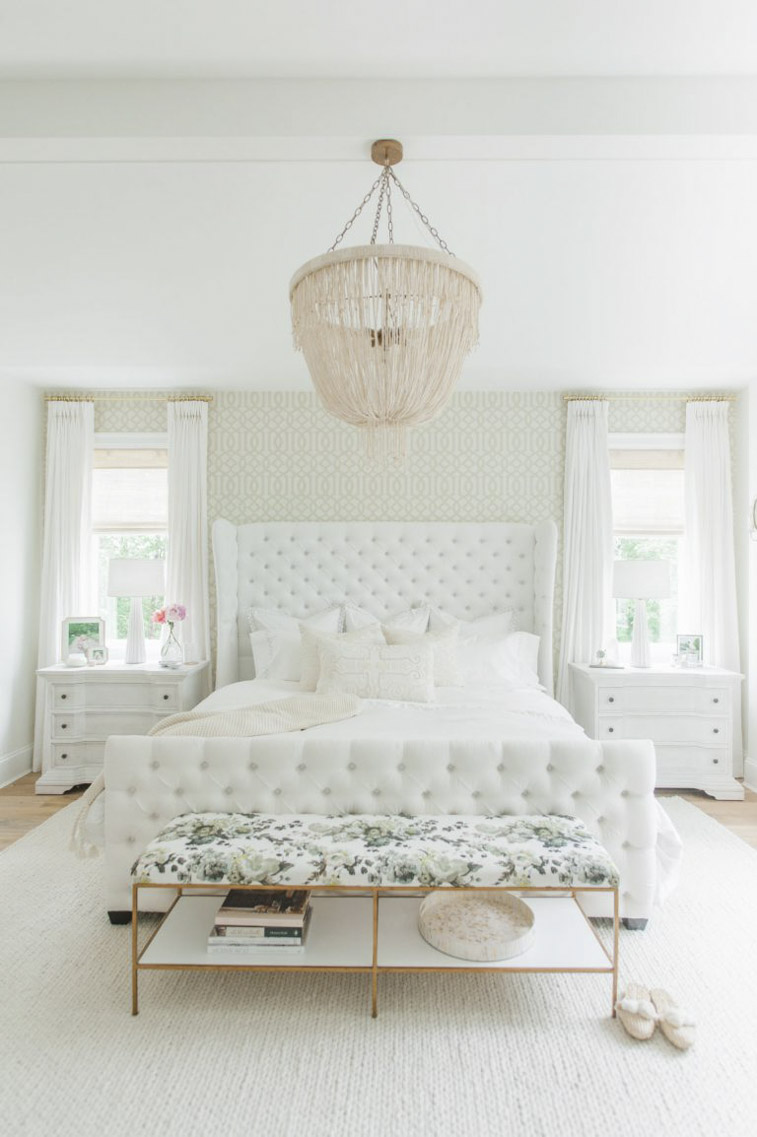
Q: What are some common mistakes to avoid in a white bedroom design?
A: Common mistakes include overdoing the monochrome palette, which can make a space feel cold and uninviting. It’s important to incorporate balance—mixing textures and introducing subtle pops of color is key. Additionally, be mindful of lighting layers; relying solely on one type of lighting can create unflattering shadows or harsh contrasts.
Embracing serenity with a white bedroom design can transform your personal space into a sanctuary that reflects your unique taste while enveloping you in calmness. By thoughtfully combining elements, every choice—big or small—can contribute to a restful haven.
 Wrapping Up
Wrapping Up
the art of white bedroom designs extends far beyond mere aesthetics; it is an invitation to cultivate serenity within the spaces we inhabit. By embracing the subtle elegance and versatility of a white palette, we create sanctuaries that inspire rest, reflection, and rejuvenation. As we weave together textures, play with light, and incorporate personal touches, each white bedroom can transform into a unique haven—a canvas where tranquility reigns and dreams unfold. So, as you embark on your own design journey, remember that the essence of serenity lies not just in the color, but in the feelings we evoke and the peace we nurture. Let your white bedroom be a gentle reminder that simplicity can be both soothing and profoundly beautiful.
 decorifusta Garden and patio decoration inspiration
decorifusta Garden and patio decoration inspiration
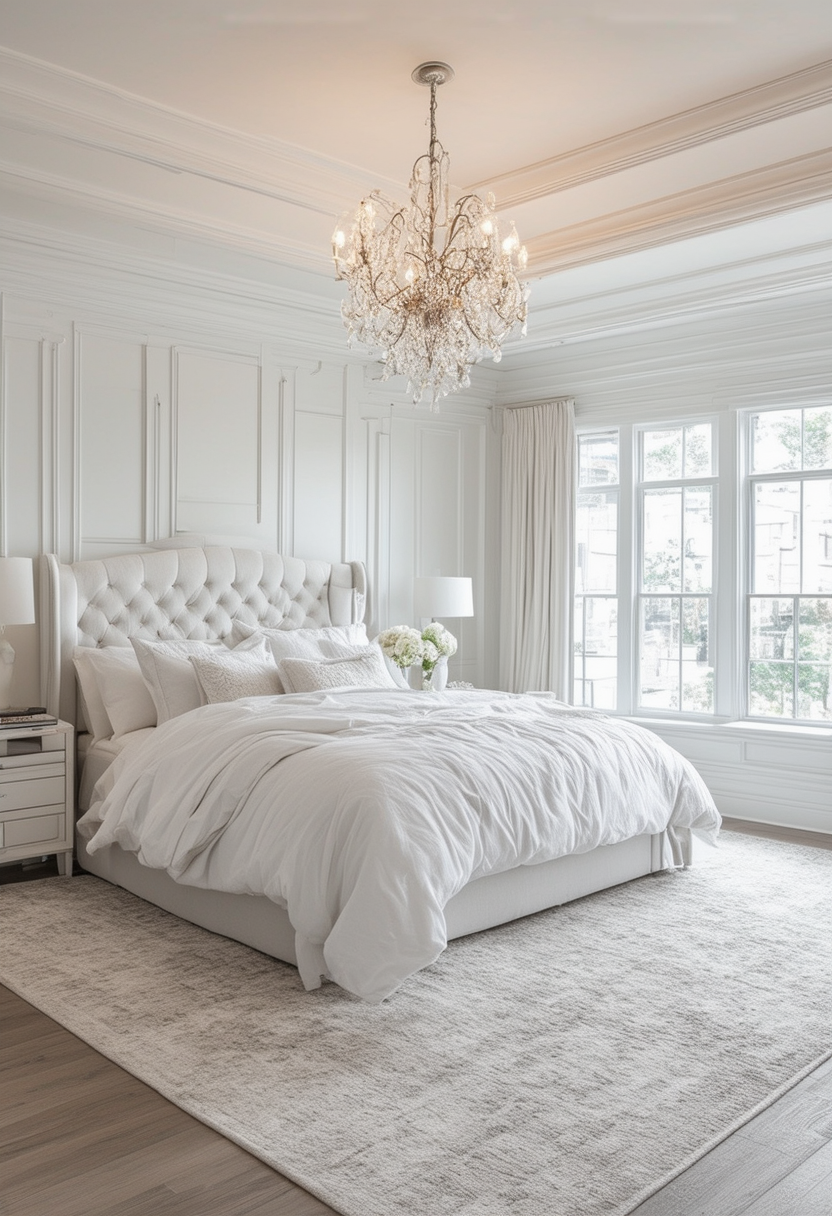
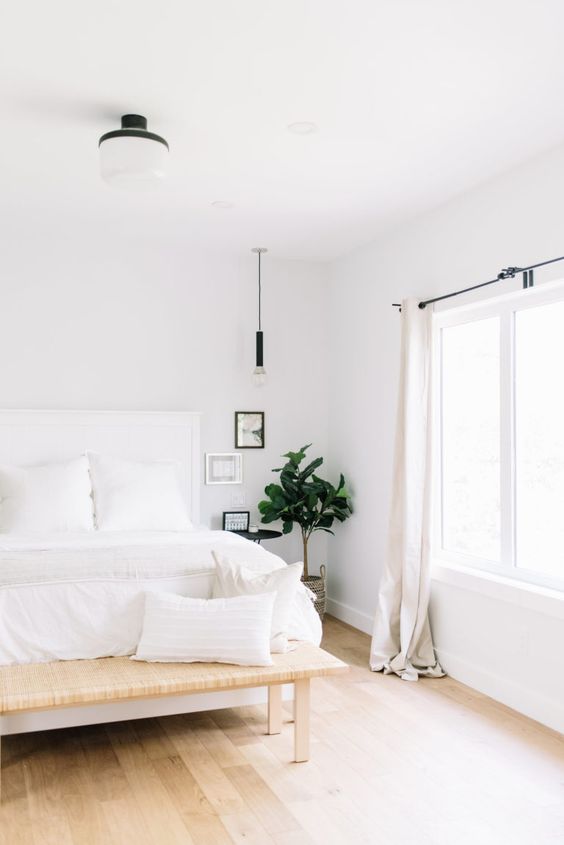 Embracing Individuality within a White Palette
Embracing Individuality within a White Palette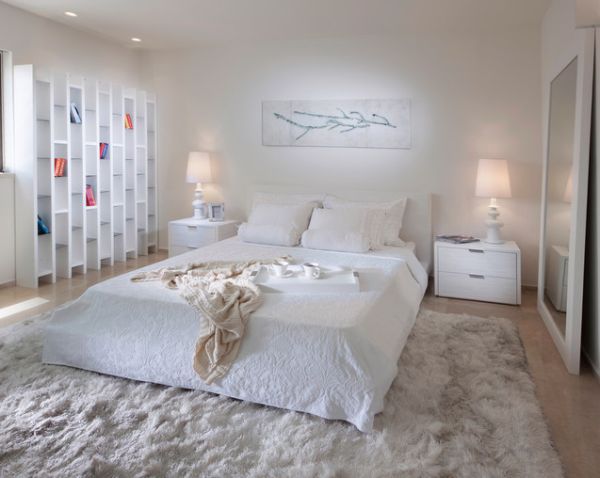 Q&A
Q&A Wrapping Up
Wrapping Up





